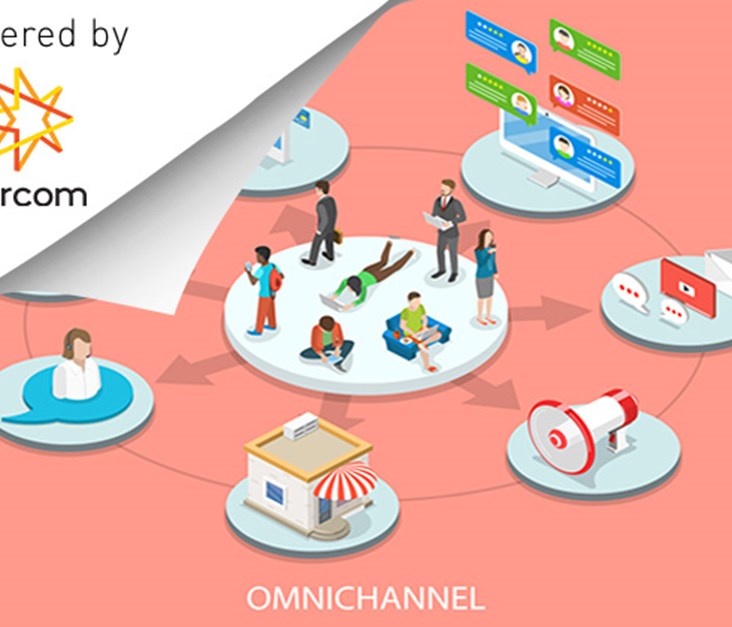
How to create branding content that piques your consumer's interest.
It is as hard to grab the attention of an adult as it is a child’s these days, especially when it comes to digital ads. With options like skip-buttons, adblockers, and with the common actions of quick scrolling and swiping, more viewing power lies in the hands of the audience. This makes your job of having your message break through the clutter and reach the masses even more difficult. Eventually, your ad gets lost between the short attention span of the uninterested and interested alike. Therefore, branded content serves as a great solution and a better alternative to traditional ads.
Branded content is a means to reach your audience by creating a narrative for your brand, these narratives are born from audience insights and may take the form of integrations or original content on TV or digital. From product placement to snackable content for social media and brand journalism, branded content is intended to be seamlessly integrated and contextual to the chosen platform. By embedding your content into mediums where your consumers already are, it becomes entertaining and engaging making your audience more likely to consume it with a positive sentiment.
Almost every brand’s success starts with a strategy, and the use of branded content is no exception. The strategy starts and ends with the consumer; knowing the consumer, and tailoring the message to your consumer’s needs are the most important aspects of a good strategy for branded content. According to OneSpot, 45 percent of consumers won’t give you the time of the day if your branded content is not relevant to their interests. You need to decide on the how, when, where, why & what that matches your brand or product and consumers’ interests.
You wouldn’t be here if this topic did not pique your interest!
One way to stand out is by finding a creative outlet that fits your brand:
The fall of traditional advertising and subsequent rise of branded content has forced brands to think outside the box, this has unlocked an entirely new world of possibilities. A world which allows brands to reach their consumers through virtual and augmented realities, a world which encourages brands to be agile by tapping into moment marketing, a world where campaigns are driven by user generated content, essentially a world where the rulebook has been completely rewritten.
In 2014, Ellen DeGeneres took a selfie at the Oscars with 11 of her celebrity friends using her Samsung phone, her photo was retweeted 2.8 million times and earned the electronics conglomerate an estimated $1 billion in media value.
And sometimes less is more when it comes to content marketing. M&M activated a simple movie night with relevant influencers in the UAE and managed to receive over 3M impressions and 6x ROI.
Porter print magazine by Net-a-Porter fashion retailer was a smart move. Using their popular website’s audience data and adding to it their fashion magazine intelligence made their print magazine a remarkable success. The customer can also scan the cover of the magazine with their app to arrive at the relevant purchase page, leading to a seamless shopping experience.
You can grab positive attention by being involved with a cause:
What do you stand for? Many of today’s brands are involved with a cause and usually use their brand to inform and engage their consumer, which in return sheds positive light on their brand.
Always’ #LikeAGirl campaign took the ‘like a girl’ phrase, which is usually used as a negative phrase, and decided to change its connotation. The video started a positive online conversation featuring female role models using the hashtag and was the fourth most viewed ad on YouTube for 2014.
Finally, be part of your community and its trends to create a brand community:
Being part of your community means that you are listening and understand your audience. All the previously mentioned examples can be implemented on a national level. By doing so, a brand might create a brand community, which is a term used to describe like-minded consumers who identify for a brand and advocate for it.
Harley-Davidson motorcycle company is known for its Harley Owner Group (HOG), a sponsored community of Harley riders that organize exclusive rides and trips online and offline, and then post videos about them online. HOG chapters are widely popular and can found in USA, Canada, India, Lebanon and many more countries.
A recent example is the Careem vs. Uber dance off, where the local community was involved in the war taking place between the transportation giants in the country. After the “fight” reached an end, people found themselves taking sides and advocating for their favorite ride.
Content is never a one-size-fits-all solution. Finding a creative outlet, being involved in a cause, and being part of your community could all be part of your strategy to help you reach to your audience.
Latest Business
Intelligence Report














